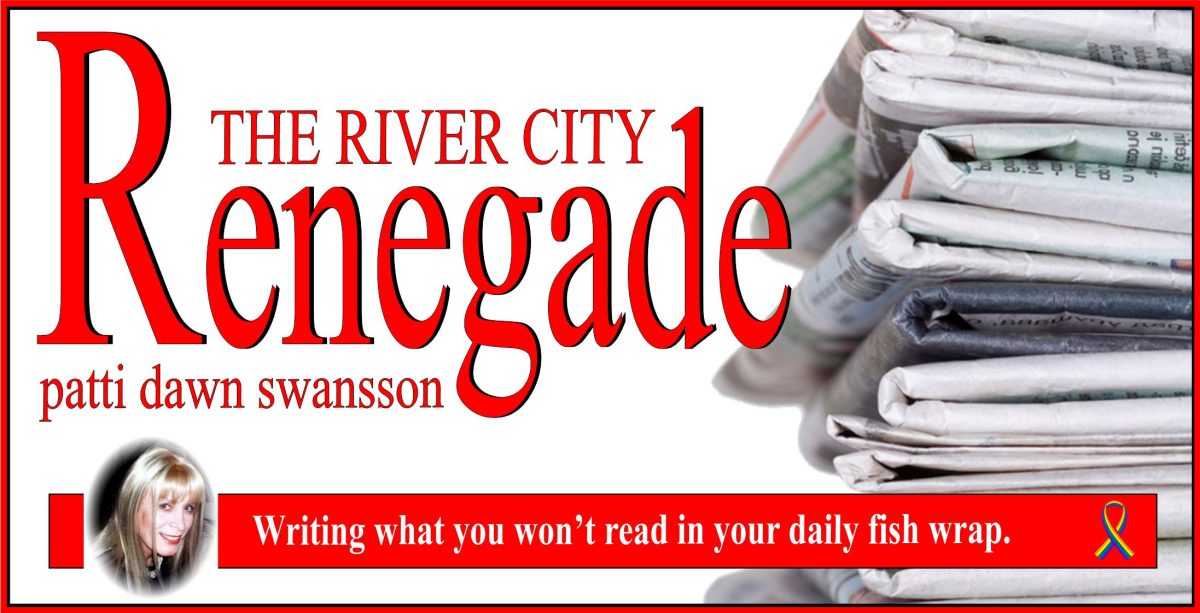
It’s no secret that hockey has a gay issue.
Check that: Men’s hockey has a gay issue.
We need only look at the highest level of the game—the National Hockey League—for evidence to confirm the existence of anti-gay sentiment, and it’s in abundance.
Consider:
- No openly gay man has skated in an NHL game, nor has one come out once the cheering had stopped. (A woman has played, but never a gay man.)
- Eight of 700-plus NHL players refused to wear Pride-themed warmup jerseys last season, citing scripture or a fear that Russia strongman Vlad Putin would turn them into a pillar of salt as the reason for not playing dress-up.
- NHL Commissioner Gary Bettman cowered like school kid caught smoking in the washroom and allowed the eight homophobes to rule the day, banning all specialty jerseys from pre-game warmups. Only those with an IQ that matches Bobby Orr’s sweater number (4) recognized it as anything other than an anti-gay edict.
- Those same decision-makers noted that numerous players had been wrapping their hockey sticks in Pride Tape, which, they reasoned, surely had to be the work of the devil. Thus the Rainbow wrap was placed on the NHL’s list of banned substances. Players were no longer allowed to use it in games, at practice or to patch up a tear in their La-Z-Boy recliner. (The fact that the Lords of Shinny walked it back and Rainbow wrap is now permitted changed nothing.)
But that’s the NHL. What about hockey as a whole? Is homosexuality a hangup at lower levels?
Well, I’m glad you asked.
Hockey Canada, you see, has delivered something called the Tracking Maltreatment in Sanctioned Hockey Report, and its 17 pages of data includes the issue of discrimination. More to the point, of the 1,872 maltreatment complaints submitted to HC’s independent third party (ITP) between July 1, 2022, and June 20, 2023, 34.1 per cent went into the discrimination file.
Now, before we proceed, perhaps we should provide the HC definition of discrimination, found in Section 11 of the Hockey Canada Rule Book:
Rule 11.4 – Discrimination strictly relates to any player or team official who engages in verbal taunts, insults or intimidation based on discriminatory grounds. Discriminatory grounds include the following, without limitation:
• Race, national or ethnic origin, skin colour or language spoken;
• Religion, faith or beliefs;
• Age;
• Sex, sexual orientation or gender identity/expression;
• Marital or familial status;
• Genetic characteristics; and,
• Disability.
With that in mind, I direct your attention to two telling sentences in the maltreatment report that grabbed my attention:
1) “The type of discrimination resulting in Rule 11.4 penalties called in the 2022-23 season was similar in breakdown to the 2021-22 season, with sexual orientation/ gender identity as the most common type of discrimination (italics emphasis added).”
2) “Of the Rule 11.4 penalties called, a minimal number were levied against girls/women.”
It figures that of the 913 penalty calls for discrimination there’d be fewer in the women’s game, because females make up less than 20 per cent of registered HC players. But we also know that being gay isn’t a hindrance in Ponytail Puck, at least not in Canada.
Caroline Ouellette, for example, was inducted into the Hockey Hall of Fame just last month. Her wife—yes, wife (Julie Chu)—had a front-row seat at the ceremony. Caroline wasn’t the first lesbian to receive the ultimate individual honor, nor will she be the last. Meantime, Canada’s gold medal-winning side at the 2022 Olympic Games featured nine lesbians, the gayest lineup to reach the top step of the podium in any sport. Ever. Moreover, when the Professional Women’s Hockey League drops the puck next month, lineups will be dotted with gay players.
So this is a dude hangup, a notion supported by studies, one of which offers this submission:
“Discriminatory behaviours also deter LGBTQ+ youth from playing sport. Greenspan, Griffith, and Watson (2019) found evidence is stronger for males than it is for females and trans people, concluding, there is now ‘ample data to suggest the prejudicial nature (of sport environments) can serve as a deterrent for athletic participation for gay males, in particular, as this population appears to be targeted harshly.’”
That same study also found that male athletes are more apt to spew homophobic language than females.
Thus, since the Hockey Canada maltreatment report focused on 480,680 mostly male youth players, the instances of discrimination based on sexual orientation/gender identity is a most regrettable bit of business.
There’s a school of thought, you see, that suggests our young people lean more toward diversity and inclusion than older generations, and that gives rise to the notion that gay kids won’t be chased away from hockey by bigotry. There’s hope they’ll stay the course, like Luke Prokop, now with Milwaukee Admirals of the American Hockey League.
But perhaps, given the results of the HC report, that’s believing in unicorns and fairy dust.
Reality tells us that homophobes walk among us in every nook and cranny of society. Always have. Always will. But it sure would be nice to get them the hell out of the hockey rink.

You must be logged in to post a comment.